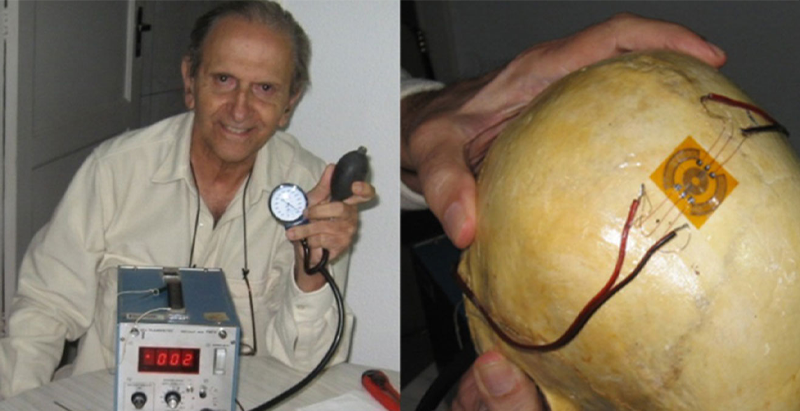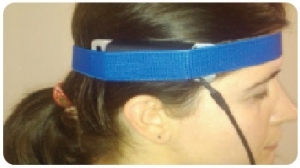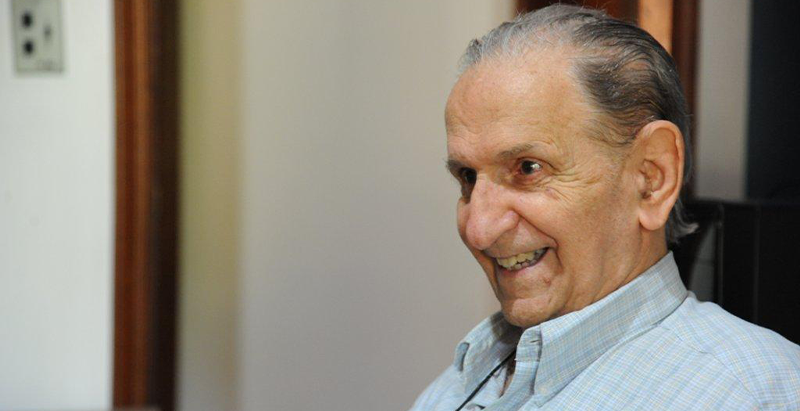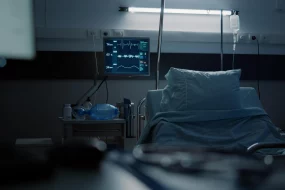
The research presented evidence that indicated that the human skull is expandable and also that it would be possible to monitor variations in intracranial pressure from its expansion or contraction
The article “The new ICP minimally invasive method shows that the Monro-Kellie doctrine is not valid”, demonstrated the expansiveness of the human skull, suggesting a revision of the Monro-Kellie Doctrine, according to which the skull should be rigid, celebrates 10 years since its publication. A result of scientific director of brain4care Gustavo Frigieri’s doctoral research, supervised at the University of São Paulo (USP) by prof. Sérgio Mascarenhas and published in 2012, the article laid the foundations for the development of brain4care’s technology.

“Even with the article’s experimental data, the research finding was initially viewed with considerable suspicion as it contradicted a principle that, according to journal editors who refused the article, was defended by all medical books. The stance of Prof. Sérgio Mascarenhas, confident of the accuracy of the data, was that faced with this contradiction, it would be necessary to rewrite the medical books”, says Gustavo Frigieri.
The research combined two experiments: in the first, simulations of variations in intracranial pressure (ICP) were performed. Human skulls were used, inside which rubber balloons and a manual air pump were placed. Balloon expansion was equivalent to increased intracranial pressure. Deformation sensors were positioned on the parietal region of the skulls and the internal pressure of the balloons was monitored using a manometer.

The second experiment involved the use of live animal models: five three-month-old mice, which had the strain sensors positioned on the right parietal bone. The animals were positioned on wooden supports and inclined at 30º, 45º and 90º for 30 seconds, so that there was variation in ICP. These maneuvers are known procedures in hospitals and their role is facilitating or hindering the passage of cerebrospinal fluid to the spine, respectively reducing or increasing its volume within the cranial space.
In both experiments, it was possible to verify that changes in intracranial pressure led to micrometric variations in skull volume. A linear relationship was also observed between the cranial deformation caused by the expansion and the variation in the internal pressure.
This was the starting point for the development of a system to monitor variations in the ICP based on the deformations of the braincase caused by its expansion. In its early versions, the sensor was defined as “minimally invasive”, requiring the opening of the skin to position the sensors, but dispensing with the drilling of the skull. Later models of the sensor, like the current one, do not require any kind of invasive procedure, being positioned on the skin.
“By dispensing with the trepanation procedure, the minimally invasive method was already considered an advance by doctors in the area. Our precise intention at the time was to improve this system. In my postdoctoral research, we took a few steps forward with the proposition of a non-invasive method”, says Frigieri.
One of the motivations for the development of a less invasive system to monitor variations in ICP was a personal experience for Sérgio Mascarenhas, who was misdiagnosed with Parkinson’s Disease in 2006. As the treatment had no effect, he had to undergo a reassessment, in which it was discovered that he actually suffered from normal pressure hydrocephalus, which was difficult to detect. Following the correct diagnosis, a surgery was performed and the researcher recovered quickly.

“After recovery, Prof. Mascarenhas started questioning the reason for the difficulties in diagnosing the disease. The answer he got was that ICP follow-up would be necessary, but it is generally only performed under very severe conditions, as it requires a surgical procedure and the patient’s hospitalization. That’s what motivated him to look for less invasive ways to carry out this same monitoring”, recalls Frigieri.
The article “The new ICP minimally invasive method shows that the Monro-Kellie doctrine is not valid”, by Sérgio Mascarenhas, Gustavo Frigieri, C. Carlotti, L. E. G. Damiano, W. Seluque, B. Colli, K. Tanaka, C. C. Wang, and K. O. Nonaka was published in 2012 in the volume Intracranial Pressure and Brain Monitoring XIV, a supplement of the journal Acta Neurochirurgica, and can be accessed through DOI: 10.1007/978-3-7091-0956-4_21.





